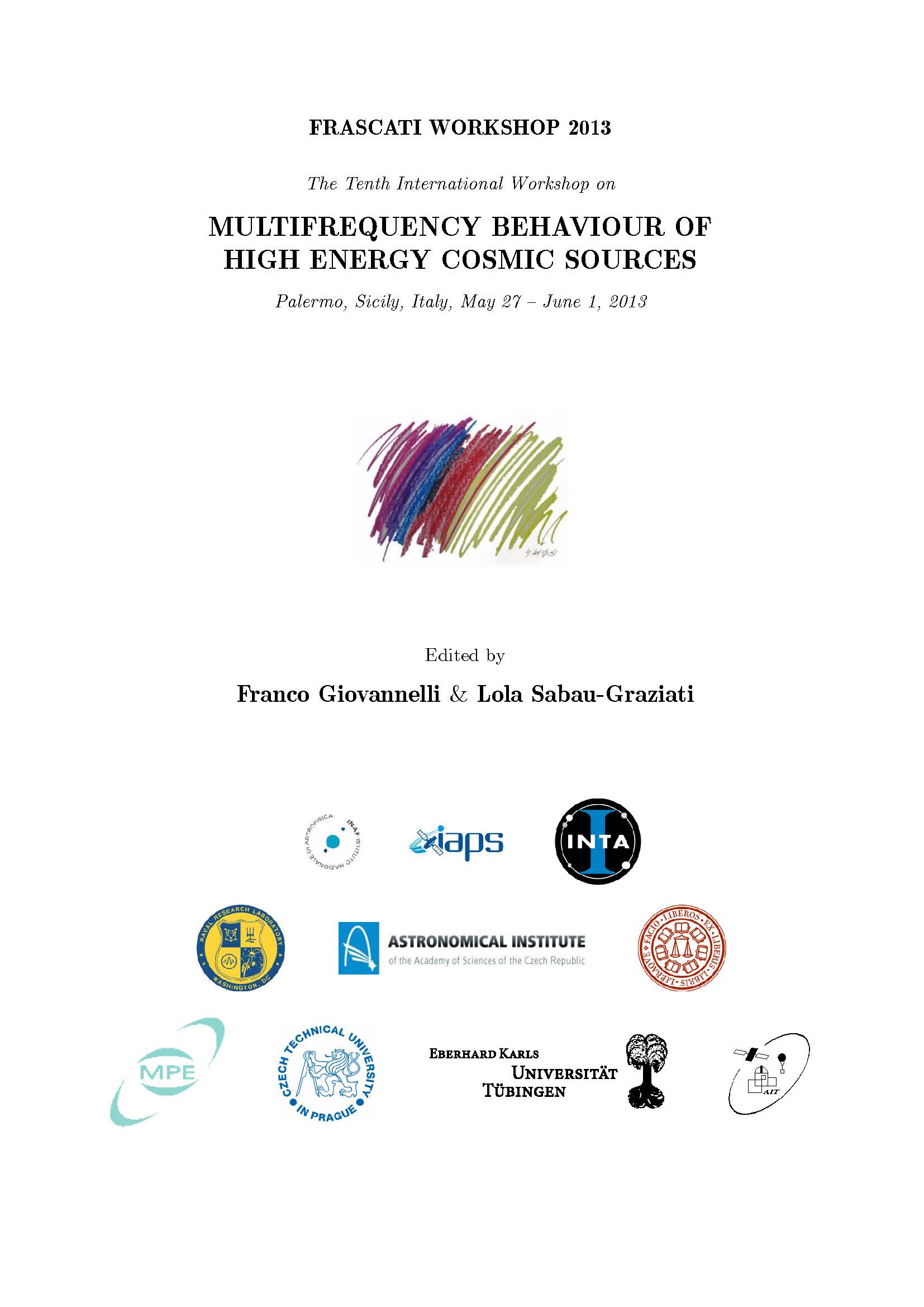Modelling the Multifrequency SED of AGN Candidates among the Unidentied EGRET and Fermi Gamma-Ray Sources
DOI:
https://doi.org/10.14311/APP.2014.01.0163Abstract
Of the 271 sources in the 3rd EGRET catalogue, 131 were reported as unidentied, i.e. not associated with any particular class of point source in the sky. Since the largest fraction of the EGRET sources were extragalactic, a sample of 13 extragalactic unidentied sources have been selected for multi-wavelength follow-up studies. Five of the selected EGRET sources coincide with gamma-ray flux enhancements seen in the Fermi-LAT data after one year of operation. In this article, we report the multi-wavelength properties of, among others, the 5 sources detected by Fermi-LAT from our sample of high galactic latitude unidentied EGRET sources. Recent spectroscopic observations with the Southern African Large Telescope (SALT) conrmed one of the unidentied EGRET sources as a possible Seyfert 2 galaxy, or alternatively, a narrow line radio galaxy. The detected gamma-ray emission (Eγ > 30 MeV) of the 5 coinciding EGRET/Fermi-LAT sources are tted with external Compton and Synchrotron Self Compton (SSC) models to investigate the energetics required to produce the EGRET/Fermi gamma-ray flux. In all the models the inclination angle of the jet with respect to the observer is jet 60, between those of Seyfert 1 and Seyfert 2/radio galaxies. These results confirm the possibility of Seyfert and radio galaxies sources are constituting a new class of gamma-ray source in the energy range Eγ > 30 MeV.Downloads
Published
Issue
Section
License
Copyright notice
Authors who publish with this journal agree to the following terms:
1. Authors retain copyright and grant the journal the right of the first publication with the work simultaneously licensed under a Creative Commons Attribution License that allows others to share the work with an acknowledgement of the work's authorship and initial publication in this journal.
2. Authors are able to enter into separate, additional contractual arrangements for the non-exclusive distribution of the journal's published version of the work (e.g., to post it to an institutional repository or to publish it in a book), with an acknowledgement of its initial publication in this journal.
3. Authors are permitted and encouraged to post their work online (e.g., in institutional repositories or on their website) prior to and during the submission process, as it can lead to productive exchanges as well as earlier and greater citation of the published work (See The Effect of Open Access).


